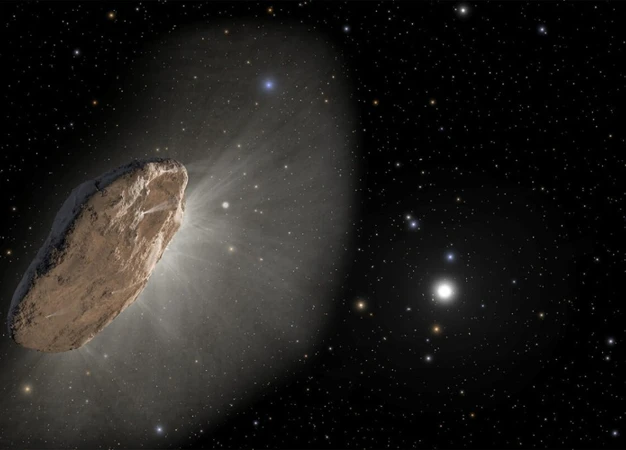Contents
- The Mystery of Comets: Unraveling their Path and Behavior
- Understanding Comets
- The Path of Comets
- Behavior of Comets
- The Role of Space Missions
- Conclusion
- Frequently Asked Questions
- References
-
Frequently Asked Questions
- 1. How are comets formed?
- 2. What are the different types of comets?
- 3. How do comets get their tails?
- 4. What causes comet outbursts?
- 5. Do comets pose a threat to Earth?
- 6. How do astronomers study comets?
- 7. What is the connection between comets and meteor showers?
- 8. How do comets influence their surroundings?
- 9. What are the key discoveries from space missions to comets?
- 10. Can comets help us understand the early solar system?
- References
- Read More
The Mystery of Comets: Unraveling their Path and Behavior
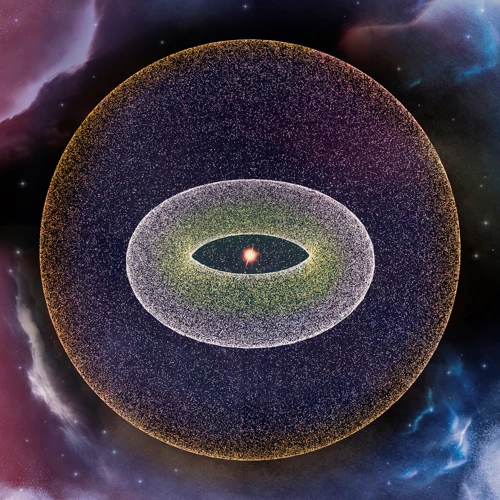
Comets have captivated humans throughout history, sparkling in the night sky and leaving us in awe of their beauty and unpredictability. These celestial wanderers have long been shrouded in mystery, with their origins and behavior eluding scientific understanding for centuries. In this article, we embark on a journey to uncover the secrets of comets, delving into their composition, the paths they follow through space, and the intriguing behaviors they exhibit. Join us as we explore the enigmatic world of comets and unravel the fascinating phenomena that surround them.
Understanding Comets
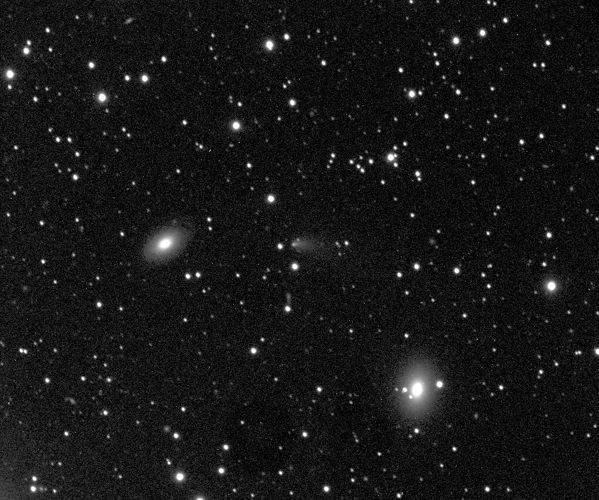
Comets are celestial bodies composed of a mixture of ice, dust, rock, and organic compounds. These cosmic wanderers originate from the outer regions of the solar system, specifically the Oort Cloud and the Kuiper Belt. Comets are often described as “dirty snowballs” due to their icy nucleus surrounded by a fuzzy coma and a brilliant tail that stretches millions of kilometers into space during their close approaches to the Sun. These icy nuclei can range in size from a few kilometers to tens of kilometers in diameter. Comets have fascinated astronomers and stargazers for centuries due to their unique appearance and unpredictable nature.
Comets consist primarily of ice, with water being the most abundant. Other volatile compounds, such as carbon dioxide, methane, and ammonia, are also present. When a comet approaches the Sun, the heat causes these volatile substances to vaporize, creating a glowing coma around the nucleus. This coma is often accompanied by one or more tails, which are formed as a result of solar radiation and the solar wind pushing the released gases and dust particles away from the nucleus. The nucleus itself is a solid, rocky core holding the volatile materials together.
There are two main types of comets: short-period comets and long-period comets. Short-period comets, also known as Jupiter-family comets, have orbits that take them closer to the Sun and are generally less than 200 years in length. They originate from the Kuiper Belt, a region beyond Neptune that is home to icy objects. Long-period comets, on the other hand, have highly elliptical orbits that can take them far beyond the outer reaches of the solar system. These comets have orbital periods ranging from 200 years to thousands of years. One famous example of a long-period comet is Hale-Bopp, which was visible from Earth for an extended period in the late 1990s.
What are Comets?
Comets are intriguing celestial objects that have captured the imagination of humans for centuries. They are composed of a mixture of ice, dust, rock, and organic compounds, earning them the nickname “dirty snowballs.” These cosmic wanderers originate from the outer regions of the solar system, specifically the Oort Cloud and the Kuiper Belt. Comets consist primarily of ice, with water being the most abundant. As comets approach the Sun, the heat causes the ice to vaporize, creating a glowing coma around the nucleus. This coma is accompanied by one or more tails that stretch millions of kilometers into space. The nucleus itself is a solid, rocky core holding the volatile materials together. Comets can be classified into two main types: short-period comets and long-period comets. Short-period comets, also known as Jupiter-family comets, have orbits that take them closer to the Sun and originate from the Kuiper Belt. Long-period comets, on the other hand, have highly elliptical orbits that can take them far beyond the outer reaches of the solar system. These comets have orbital periods ranging from 200 years to thousands of years.
Composition and Structure
Comets are composed of a complex mixture of materials, providing valuable insights into the early solar system. The composition of comets includes volatile substances such as water ice, carbon dioxide, methane, and ammonia. These volatile compounds make up the majority of a comet’s mass, with water being the most abundant component. In addition to volatiles, comets also contain solid particles, known as dust or silicates, which make up the solid nucleus of the comet.
The structure of a comet is layered, with the nucleus at its core. The nucleus is the solid, rocky center of the comet, typically measuring several kilometers in diameter. It is composed of a mixture of ice, dust, and rocky materials. The icy composition gives the nucleus its distinctive appearance and allows it to sublimate as it approaches the Sun, releasing gas and forming a coma and tail.
Surrounding the nucleus is the coma, which is a cloud of gas and dust that forms as the icy nucleus heats up and releases volatile compounds. The coma is composed of gases evaporated from the nucleus, along with dust and rocky particles ejected from the surface. The size of the coma can vary significantly depending on the activity of the comet and its distance from the Sun.
As a comet approaches the Sun, the solar heat and radiation cause the coma to expand and form the iconic tails associated with comets. The tails of comets are composed of dust particles and ionized gas that are blown away from the Sun by the solar wind. The dust tail appears white or yellowish and follows a curved trajectory, while the ion tail appears bluish and points directly away from the Sun due to the interaction with the Sun’s magnetic field.
Understanding the composition and structure of comets provides valuable clues about the early solar system’s formation and the processes that have shaped our cosmic neighborhood. Scientists study comets through space missions, ground-based observations, and analysis of the dust and gas particles collected from cometary tails, enabling us to gain a deeper understanding of these intriguing celestial objects.
Types of Comets
Comets come in a variety of types based on their origin, composition, and behavior. One classification of comets is based on their orbital characteristics. Short-period comets, as mentioned earlier, have orbits that take them closer to the Sun and are generally less than 200 years in length. These comets originate from the Kuiper Belt and are known as Jupiter-family comets. Long-period comets, on the other hand, have highly elliptical orbits that can take them far beyond the outer reaches of the solar system. These comets have orbital periods ranging from 200 years to thousands of years.
Another classification of comets is based on their composition. Comets can be categorized into volatile-rich comets and dust-rich comets. Volatile-rich comets contain a higher percentage of volatile substances such as water, carbon dioxide, and methane. These comets tend to produce more pronounced comas and tails as the heat from the Sun causes the volatile substances to vaporize. Dust-rich comets, on the other hand, have a higher percentage of dust particles in their composition. These comets may have less prominent tails but can still display a fuzzy coma around their nucleus.
One particularly fascinating type of comets is known as periodic comets. These comets have predictable orbits and return to the inner solar system at regular intervals. They are named after their discoverers and are assigned a number indicating the order of their discovery. One famous example is Halley’s Comet, which is named after astronomer Edmond Halley and returns to the inner solar system every 76 years.
Understanding the different types of comets allows astronomers to study their behavior, composition, and origins. By analyzing the properties of comets, scientists can gain valuable insights into the formation and evolution of the solar system.
The Path of Comets
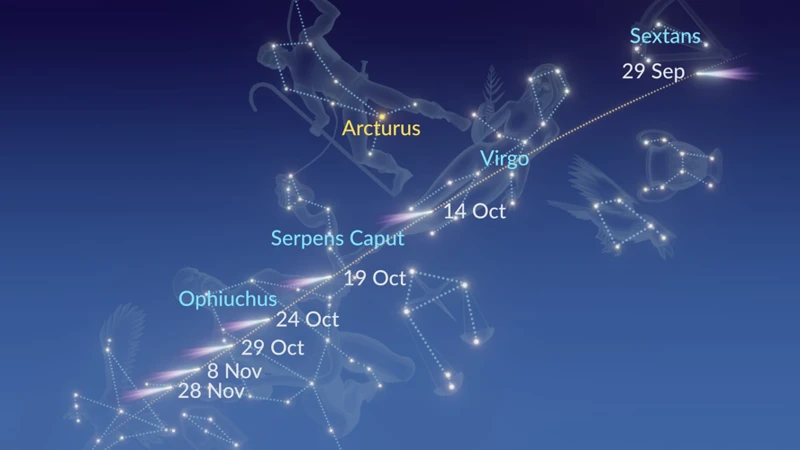
The path of comets is a complex journey that involves their origin, formation, and orbital dynamics. Understanding these factors is key to unraveling the mysteries of these celestial objects. Comets are believed to originate from two main regions: the Oort Cloud and the Kuiper Belt. The Oort Cloud is a spherical cloud of icy bodies located at the outermost reaches of the solar system, while the Kuiper Belt is a disc-shaped region beyond Neptune containing icy objects similar to comets. These regions act as reservoirs of comets, with their gravitational interactions and occasional disturbances from nearby stars or passing objects sending comets on a path towards the inner solar system.
Once a comet is dislodged from its home in the outer regions, it begins its journey towards the Sun. The gravitational pull of the Sun and the planets in the solar system play a crucial role in determining the path of the comet. As a comet approaches the Sun, it follows an elliptical orbit, with the Sun at one of the foci. The speed of the comet increases as it gets closer to the Sun, resulting in a sweeping trajectory that can take it very close to the Sun or even graze its surface. This close approach to the Sun, known as perihelion, is often the most visually spectacular phase of a comet’s path, as the intense heat causes the volatiles to vaporize and create the coma and distinctive tails that we observe from Earth.
The orbital dynamics of comets can be influenced by various astronomical factors. Gravitational interactions with planets, such as Jupiter, can significantly alter a comet’s trajectory. In some cases, a comet may be flung out of the solar system altogether, becoming a rogue comet. Other comets may experience close encounters with planets, leading to orbital changes and potential future impacts. One notable example is Comet Shoemaker-Levy 9, which broke apart and collided with Jupiter in 1994, providing astronomers with a rare opportunity to study the effects of such an event.
Understanding the path of comets is critical not only for deciphering their behavior but also for assessing potential risks they may pose to Earth. By studying their trajectories and orbital dynamics, scientists can track and predict the movements of comets, identifying those that may pose a threat of collision with our planet. Continuous monitoring and advances in technology allow astronomers to refine their understanding of comets’ paths and provide crucial insights into the nature of these elusive objects.
Origin and Formation
The origin and formation of comets can be traced back to the early stages of the solar system’s formation, around 4.6 billion years ago. According to current scientific theories, comets were formed from the leftover materials that did not accrete into planets during this chaotic period.
1. Accretion: The process of planet formation involved the gradual accumulation of dust and gas in the protoplanetary disk surrounding the young Sun. Within this disk, small particles of dust and ice collided and stuck together, forming larger bodies called planetesimals.
2. Protoplanetary Disk: As the protoplanetary disk cooled down, the region farther from the Sun, known as the outer disk, was cold enough for volatile substances, such as water, ammonia, and methane, to freeze into solid ice. These ices became incorporated into the planetesimals, giving rise to the icy nuclei of comets.
3. Moving Beyond the Outer Disk: As the giant planets, like Jupiter and Saturn, began to form, their gravitational influence caused disturbances in the outer disk. These disturbances led to the scattering of icy planetesimals toward the outer reaches of the solar system, where they eventually settled in the Oort Cloud and the Kuiper Belt.
4. Oort Cloud and Kuiper Belt: The Oort Cloud, named after astronomer Jan Oort, is a hypothesized spherical reservoir of comets surrounding the solar system at a distance of about 2 light-years. It is believed to contain billions of icy bodies. The Kuiper Belt, on the other hand, is a disk-shaped region beyond Neptune’s orbit that hosts a vast number of icy objects, including comets.
5. Triggering Events: Various events, such as the gravitational influence of passing stars, galactic tides, or the gravitational pull of the giant planets, can perturb the orbits of comets, causing them to be ejected from their original reservoir and sent on trajectories that bring them closer to the Sun.
Understanding the origin and formation of comets is crucial in unraveling the mysteries they hold and provides valuable insights into the early history of our solar system.
Orbital Dynamics
Orbital dynamics play a crucial role in understanding the path that comets follow through space. The gravitational pull of the Sun and other celestial bodies in the solar system greatly influence the trajectory of comets. Comets move in highly elliptical orbits, where their distance from the Sun varies significantly throughout their journey.
One of the key factors in determining the orbital dynamics of comets is the perihelion, which is the point in their orbit where they are closest to the Sun. The perihelion distance and angle of approach can affect the behavior of comets, including the intensity and length of their tails. Additionally, the aphelion, the point in the orbit furthest from the Sun, also plays a role in determining the orbital characteristics of comets.
It is important to note that comets can be influenced by the gravitational interactions with large planets. The most famous example of this occurred in 1992 when Comet Shoemaker-Levy 9 was torn apart by the immense gravitational forces of Jupiter, resulting in a spectacular collision with the planet. This event provided valuable insights into the composition and structure of comets.
Comets can also be captured into temporary or long-term orbits around planets. Jupiter is known for capturing comets due to its immense gravitational pull, while other gas giants like Saturn and Neptune can also capture comets temporarily.
Understanding the orbital dynamics of comets allows scientists to predict their behaviors and appearances as they approach the Sun. By studying the gravitational forces at play and the interactions with other celestial bodies, astronomers gain insights into the origins, evolution, and behavior of comets. The intricate dance of these cosmic wanderers around the Sun continues to fascinate and intrigue astronomers, providing a wealth of knowledge about the dynamics of our solar system.
Would you like to learn more about the mythology and symbolism associated with constellations like Orion or Ophiuchus? Check out the articles on Orion and Ophiuchus to delve deeper into the rich cultural connections intertwined with these celestial wonders.
Influence of Astronomical Factors
Several astronomical factors play a significant role in shaping the behavior of comets. One of the most influential factors is the gravitational pull from nearby celestial bodies. The gravitational force exerted by planets, such as Jupiter, can alter a comet’s trajectory by either accelerating or decelerating its speed. This gravitational interaction can lead to dramatic changes in a comet’s path, causing it to be flung into different regions of the solar system or even ejected into interstellar space. The famous case of Comet Shoemaker-Levy 9 serves as a remarkable example of this phenomenon. The comet’s encounter with Jupiter’s immense gravity resulted in its fragmentation and subsequent bombardment of the planet’s atmosphere.
In addition to gravitational influences, the solar wind also has a significant impact on comets. The solar wind is a stream of charged particles emitted by the Sun that exerts a pressure on objects in space. The pressure exerted by the solar wind can cause the dust and gas particles in a comet’s coma to be pushed away, forming a tail that always points away from the Sun. This pressure can also create a bow shock in front of the comet, where the solar wind encounters the comet’s coma.
The angle at which a comet’s orbit intersects with the plane of the solar system can affect its behavior. When a comet’s orbit is nearly perpendicular to the plane, it is considered to have a high inclination. Comets with high inclinations tend to have more eccentric and unpredictable paths as they can be influenced by gravitational interactions from a wider range of celestial bodies.
The distance between a comet and the Sun plays a crucial role. As a comet approaches the Sun, the heat causes the ice in its nucleus to vaporize, creating a glowing coma and a tail. The intensity and length of the tail depend on factors such as the size of the nucleus, the composition of the comet, and the distance from the Sun. The closer the comet gets to the Sun, the more pronounced these effects become.
Understanding the intricate interplay between these astronomical factors is key to unraveling the path and behavior of comets. By studying their orbits, trajectories, and interactions with celestial bodies, scientists can gain valuable insights into the origins and dynamics of these enigmatic objects.
Behavior of Comets
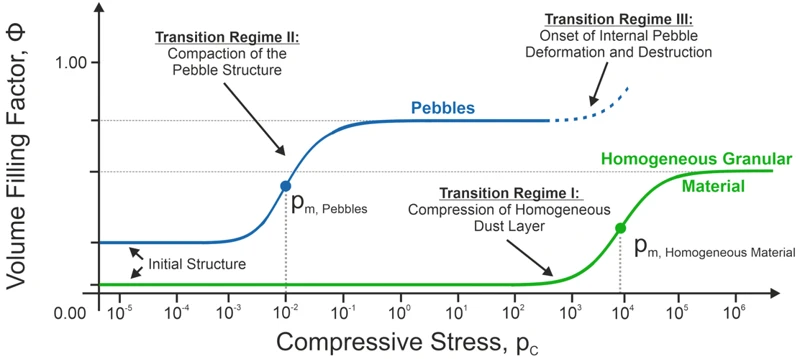
Comets are known for their fascinating and sometimes unpredictable behavior. One of the most iconic aspects of comets is their tails. When a comet approaches the Sun, the heat causes the volatile substances on its surface to vaporize, forming a glowing coma and creating two main types of tails – the dust tail and the ion tail. The dust tail is composed of small dust particles that reflect sunlight, giving it a yellowish-white appearance. The ion tail, on the other hand, is made up of charged particles that respond to the solar wind, creating a bluish glow.
Comet outbursts are another intriguing phenomenon associated with these celestial objects. Periodically, comets experience sudden increases in brightness, sometimes by several magnitudes. These outbursts occur as a result of a buildup of pressure beneath the surface of the nucleus, causing an explosive release of gas and dust. The exact cause of these outbursts is still not fully understood, adding to the mysterious nature of comets.
Comets also play a role in the occurrence of meteor showers. When Earth passes through the orbit of a comet, the debris left behind by the comet intersects with our planet’s atmosphere, causing a spectacular display of shooting stars. Meteor showers are named after the constellation from which they appear to radiate, such as the Perseids, which seem to originate from the constellation Perseus. These showers occur annually and provide an opportunity for stargazers to witness the remnants of cometary activity.
The behavior of comets is a complex and captivating subject of study. Scientists continue to investigate these celestial bodies to gain a deeper understanding of their origins, composition, and the mechanisms behind their enigmatic behavior. By studying the behavior of comets, we unlock valuable insights into the history and dynamics of our solar system.
Comet Tails: An Illuminating Phenomenon
Comet tails are one of the most captivating and visually striking aspects of these celestial bodies. When a comet approaches the Sun, the intense heat causes the volatile materials within the comet to vaporize and create a glowing coma around the nucleus. It is within this coma that the magnificent tails of comets originate.
The tails of comets are formed as a result of two main processes: dust reflection and ionization. As the nucleus of the comet vaporizes, it releases dust particles that are pushed away from the Sun by the solar radiation and the solar wind. These dust particles reflect sunlight, creating a visible tail that can extend for millions of kilometers. This reflected sunlight is what gives comets their characteristic brightness and the tail its illuminated appearance.
In addition to the dust tail, comets also have an ion tail. As the volatile gases within the coma are ionized by the Sun’s ultraviolet radiation, they become charged particles and are affected by the solar wind. This charged gas, or plasma, is pushed away from the Sun and forms a separate tail that is often bluish in color. The ion tail can be much narrower and more distinct than the dust tail, as it is directly affected by the magnetic field of the Sun.
It is important to note that comet tails always point away from the Sun, regardless of the comet’s direction of travel. This is due to the pressure from the solar wind pushing the dust and ionized gas particles away from the Sun.
The length and brightness of comet tails can vary greatly depending on the composition of the comet, its distance from the Sun, and the intensity of the solar wind. Some comets have tails that stretch for hundreds of thousands of kilometers, while others may have shorter, more compact tails. The tails can also change in appearance and structure over time as the comet moves along its orbit and interacts with the solar wind.
Observing and studying comet tails can provide valuable insights into the composition and behavior of comets. By analyzing the composition and structure of the particles within the tail, scientists can gain a better understanding of the volatile materials present in comets and learn more about the early solar system’s formation. The study of comet tails helps astronomers track the movement and evolution of comets as they journey through the depths of space.
Comet tails are a fascinating and illuminating phenomenon that adds to the mystique and allure of these celestial visitors. Their beauty and complexity serve as a reminder of the intricate and ever-changing nature of our universe.
Comet Outbursts: Unpredictable Events
Comet outbursts are dramatic and unpredictable events that occur when comets experience sudden, significant increases in brightness. These outbursts are often accompanied by a rapid expansion of the coma and an elongation of the tail. While the exact cause of these outbursts is still not fully understood, several theories have been proposed to explain these intriguing phenomena.
One possible explanation for comet outbursts is the release of gas and dust trapped beneath the surface of the comet’s nucleus. As the comet approaches the Sun, the increasing heat causes the volatile substances to sublimate, creating pockets of gas and dust beneath the surface. When the pressure within these pockets becomes too great, it can lead to a sudden and explosive release, resulting in a dramatic increase in brightness and the expansion of the coma.
Another theory suggests that outbursts may be triggered by impacts from smaller objects, such as meteoroids or dust particles, colliding with the comet. These impacts can disrupt the surface layers, exposing fresh volatile materials to solar radiation and causing a temporary increase in activity. Additionally, when a comet passes through regions of space with higher concentrations of dust, these particles can create disturbances in the comet’s coma, leading to outbursts.
Comet outbursts are notoriously difficult to predict, as they can occur without warning and vary in intensity and duration. Astronomers closely monitor comets using telescopes and space missions to capture these rare events and study them in detail. By studying the characteristics of outbursts and their relationship to the comet’s composition and environment, scientists hope to gain insights into the processes that drive these spectacular displays.
Comet outbursts continue to be fascinating and mysterious phenomena that showcase the dynamic nature of these celestial objects. Their unpredictable nature adds to the allure and excitement of studying comets, as scientists strive to unravel the secrets behind these captivating events.
Meteor Showers and Comets
Meteor showers are stunning celestial events that occur when Earth passes through the debris left behind by comets. As comets orbit the Sun, they shed dust and small rocky particles, creating a trail of debris along their path. When Earth’s orbit intersects with these trails, the particles enter our atmosphere and burn up, creating streaks of light known as meteors or shooting stars.
Meteor showers are named after the constellation from which they appear to radiate. For example, the annual Perseid meteor shower appears to originate from the constellation Perseus. The Orionid meteor shower, on the other hand, seems to radiate from the constellation Orion. These showers occur at the same time each year as Earth passes through the same region of the comet’s debris trail.
The intensity of a meteor shower depends on various factors, including the size and density of the comet’s debris trail. Some meteor showers, like the Perseids, are known for their spectacular displays, with dozens or even hundreds of meteors visible per hour. Other showers may be less active, with only a few meteors visible throughout the night.
Observing a meteor shower is a thrilling experience that can be enjoyed by stargazers of all levels. To maximize your chances of seeing meteors, find a location away from city lights with a clear and unobstructed view of the night sky. Dress warmly, lie back, and allow your eyes to adjust to the darkness. Patience is key, as the peak activity of a meteor shower may occur in the early hours of the morning.
So, the next time you gaze up at a meteor shower, marvel at the connection between these beautiful celestial displays and the comets that left behind their cosmic debris. It’s a reminder of the vastness and interconnectedness of our universe.
The Role of Space Missions
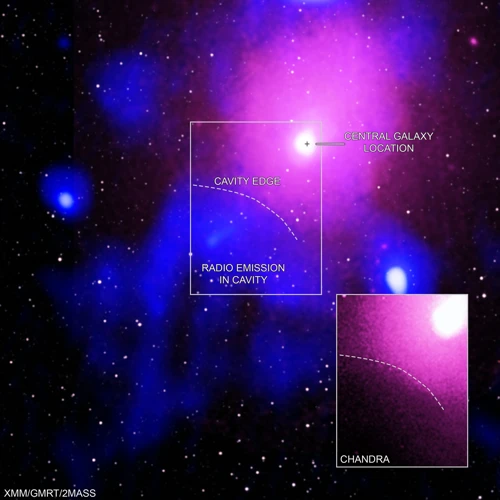
Space missions have played a crucial role in expanding our knowledge and understanding of comets. These ambitious ventures allow us to study comets up close and collect valuable data that helps unravel their mysteries. One notable space mission that contributed significantly to our understanding of comets is the European Space Agency’s Rosetta mission. Launched in 2004, Rosetta successfully entered orbit around Comet 67P/Churyumov-Gerasimenko in 2014, becoming the first spacecraft to rendezvous with a comet.
The Rosetta mission was equipped with a suite of scientific instruments that allowed scientists to analyze the composition, structure, and behavior of the comet. The mission’s lander, Philae, even made a historic touchdown on the comet’s surface, providing insights into its physical properties. The data collected by Rosetta gave scientists a deeper understanding of the composition of comets and their potential role in the origin of life on Earth.
Another notable space mission that furthered our knowledge of comets is NASA’s Deep Impact mission. Launched in 2005, Deep Impact involved deliberately crashing a probe into the comet Tempel 1 to study its interior. The mission provided valuable information about the composition and structure of cometary nuclei.
Space missions like Rosetta and Deep Impact have significantly contributed to our understanding of comets’ formation, composition, and behavior. They have also revealed the diverse nature of comets, with each mission uncovering unique aspects. These missions have paved the way for future explorations and expanded our understanding of the universe.
Key Discoveries and Insights:
- The composition of comets, including water and various volatile compounds.
- The structure of cometary nuclei and the presence of solid, rocky cores.
- The formation and evolution of comets in the outer regions of the solar system.
- The role of comets in delivering organic materials and water to Earth.
Exploring Comets Up Close
Exploring comets up close has been made possible through space missions specifically designed to study these enigmatic celestial objects. These missions aim to gather valuable data and provide insights into the composition, structure, and behavior of comets. Here are some notable space missions that have contributed to our understanding of comets:
1. ESA’s Rosetta Mission: Launched in 2004, the Rosetta spacecraft rendezvoused with comet 67P/Churyumov-Gerasimenko in 2014. Rosetta not only orbited the comet but also deployed the Philae lander, which made the first-ever landing on a comet’s surface. This mission provided valuable data on the comet’s composition, surface features, and the interactions between the nucleus and the solar wind.
2. NASA’s Stardust Mission: The Stardust spacecraft collected samples of dust particles from the coma of comet Wild 2 in 2004. The spacecraft then returned to Earth in 2006, providing scientists with the opportunity to directly analyze the cometary material. The mission allowed researchers to study the isotopic composition of cometary material and gain insights into the formation of our solar system.
3. ESA’s Giotto Mission: Launched in 1985, the Giotto spacecraft flew by Halley’s Comet in 1986, coming within 600 kilometers of its nucleus. This close encounter provided the first detailed images of a comet’s nucleus and revealed valuable information about its composition and structure.
These missions, along with others such as NASA’s Deep Impact and EPOXI missions, have significantly advanced our understanding of comets. The wealth of data collected from these close encounters has provided scientists with valuable insights into the origin, evolution, and dynamics of these celestial wanderers. By studying comets up close, we can gain a deeper understanding of the early solar system and potentially uncover clues about the origins of life on Earth.
Key Discoveries and Insights
Over the years, space missions have played a crucial role in providing valuable insights into the fascinating world of comets. These missions have allowed scientists to study comets up close and gather data that has led to significant discoveries and a deeper understanding of these celestial objects.
One of the most iconic missions was the European Space Agency’s Rosetta mission, which successfully landed a probe named Philae on the surface of comet 67P/Churyumov-Gerasimenko. This historic achievement provided scientists with unprecedented access to a comet’s surface and helped shed light on its composition and structure.
Through the Rosetta mission, scientists discovered that comets contain complex organic molecules, including amino acids, which are considered building blocks of life. This finding raises intriguing questions about the role comets may have played in the origins of life on Earth.
Another key discovery is the relationship between comets and meteor showers. It was observed that certain meteor showers, such as the Perseids and the Leonids, are directly linked to comets. As comets orbit the Sun, they shed debris, which forms a trail in space. When Earth crosses paths with these trails, the debris enters our atmosphere, creating dazzling meteor showers.
Space missions have also provided valuable information about the behavior of comets. Outbursts, sudden increases in activity, have been observed in several comets. These events are thought to be triggered by the sublimation of volatile substances or impact events, causing the release of trapped gases and dust. The study of these outbursts has contributed to our understanding of the dynamic nature of comets.
Space missions have been instrumental in unraveling the mysteries of comets. Through these missions, scientists have made key discoveries and gained insights into the composition, behavior, and origin of comets. The data collected has expanded our knowledge and deepened our fascination with these enigmatic celestial bodies.
Conclusion

Comets continue to captivate our imagination and intrigue scientists as we strive to unravel their mysteries. Through the study of comets, we have gained valuable insights into the formation and evolution of our solar system. Understanding the composition, structure, and behavior of comets is crucial not only for expanding our knowledge of the universe but also for gaining a deeper understanding of the origins of life on Earth.
The path of comets, influenced by numerous astronomical factors, can lead to spectacular displays, such as meteor showers and comet outbursts, which further highlight their unpredictable nature. Space missions like the European Space Agency’s Rosetta mission, which successfully landed a probe on comet 67P/Churyumov-Gerasimenko, have provided us with invaluable data and allowed us to explore comets up close. Through these missions, we have made significant discoveries, including the detection of complex organic molecules on comets, which are building blocks of life.
In conclusion, the study of comets not only sheds light on the origins and behavior of these captivating celestial bodies but also provides us with a deeper understanding of our place in the cosmos. As we continue to unravel the mysteries of comets, we pave the way for future discoveries that could potentially revolutionize our understanding of the universe and our own existence.
Frequently Asked Questions

FAQs about Comets
1. What causes a comet’s tail to form?
When a comet approaches the Sun, heat causes the icy nucleus to vaporize, releasing gases and dust particles. Solar radiation and the solar wind then push these materials away from the nucleus, creating a glowing coma and tail.
2. How long are comet tails?
Comet tails can stretch millions of kilometers into space. They are often much larger than the nucleus itself, creating a spectacular visual display during close approaches to the Sun.
3. Can comets collide with other celestial objects?
While rare, comets can potentially collide with other celestial objects. The most notable example is Comet Shoemaker-Levy 9, which collided with Jupiter in 1994, creating an impressive series of impact scars.
4. Are all comets visible from Earth?
No, not all comets are visible from Earth. Some comets stay too far away from the Sun or are too faint to be observed without specialized equipment.
5. Do comets pose a threat to Earth?
For the most part, comets do not pose a significant threat to Earth. However, large comets or comet fragments could potentially cause damage if they were to collide with our planet.
6. Can comets influence weather on Earth?
While comets do not directly influence Earth’s weather, they have been associated with various cultural beliefs and superstitions throughout history. However, these beliefs do not have a scientific basis.
7. How are comets named?
Comets are typically named after the scientists or observatories that discover them. Occasionally, comets may be named to commemorate special events or individuals.
8. Can we predict when a comet will appear?
With advances in technology and our understanding of the solar system, astronomers can predict the appearance of many comets. However, the behavior of some comets remains unpredictable.
9. Do comets have any influence on Earth’s magnetosphere?
Comets do interact with Earth’s magnetosphere, as the charged particles in a comet’s coma interact with our planet’s magnetic field. This interaction can produce auroras and other phenomena.
10. Have any space missions been sent to study comets?
Yes, several space missions have been sent to study comets up close. Some notable missions include the European Space Agency’s Rosetta mission, which studied the comet 67P/Churyumov-Gerasimenko, and NASA’s Stardust mission, which collected samples from the comet Wild 2.
References
Frequently Asked Questions

1. How are comets formed?
Comets are formed when remnants from the early solar system, such as dust, rocks, and ices, come together under gravity to create a nucleus. This nucleus is the solid core of the comet.
2. What are the different types of comets?
There are three main types of comets: short-period comets, long-period comets, and sungrazing comets. Short-period comets have orbits of less than 200 years, while long-period comets take more than 200 years to complete an orbit. Sungrazing comets have extremely close approaches to the Sun.
3. How do comets get their tails?
Comet tails are formed when the heat from the Sun causes some of the comet’s ice to vaporize. This vaporization releases gas and dust particles, which form a glowing coma and a tail that always points away from the Sun due to solar radiation pressure.
4. What causes comet outbursts?
Comet outbursts, also known as outbursts or flares, are sudden and temporary increases in the brightness or activity of a comet. These outbursts can be caused by the release of built-up pressure within the comet, the sudden exposure of volatile materials, or the fragmentation of the comet’s nucleus.
5. Do comets pose a threat to Earth?
While it is extremely rare for comets to collide with Earth, they do pose a potential threat. If a large comet were to collide with Earth, it could result in significant damage due to the release of energy from the impact. However, extensive efforts are made to track and monitor the trajectories of known comets to assess any potential risks.
6. How do astronomers study comets?
Astronomers study comets using a variety of methods. They observe comets through telescopes to gather information about their behavior and composition. Space missions, such as NASA’s Stardust and ESA’s Rosetta, have also provided valuable data by directly visiting and analyzing the composition of comets.
7. What is the connection between comets and meteor showers?
Meteor showers are often caused by the Earth passing through the debris left behind by comets. When comets orbit the Sun, they leave behind a trail of dust and debris. When the Earth’s orbit intersects with this debris, it enters the atmosphere, creating a meteor shower as the particles burn up.
8. How do comets influence their surroundings?
Comets can have a significant impact on their surroundings. As they approach the inner regions of the solar system, comets release gas and dust into space, which can affect the composition of planetary atmospheres and contribute to the formation of new celestial objects like asteroids and meteoroids.
9. What are the key discoveries from space missions to comets?
Space missions to comets have provided invaluable insights into these enigmatic objects. For example, the Rosetta mission discovered organic molecules on the surface of comet 67P/Churyumov-Gerasimenko, suggesting that comets may have played a role in seeding Earth with the building blocks of life.
10. Can comets help us understand the early solar system?
Absolutely! Comets are often considered time capsules from the early solar system. By studying comets, scientists can gain valuable insights into the conditions and processes that existed billions of years ago, helping us unravel the mysteries of our cosmic origins.

